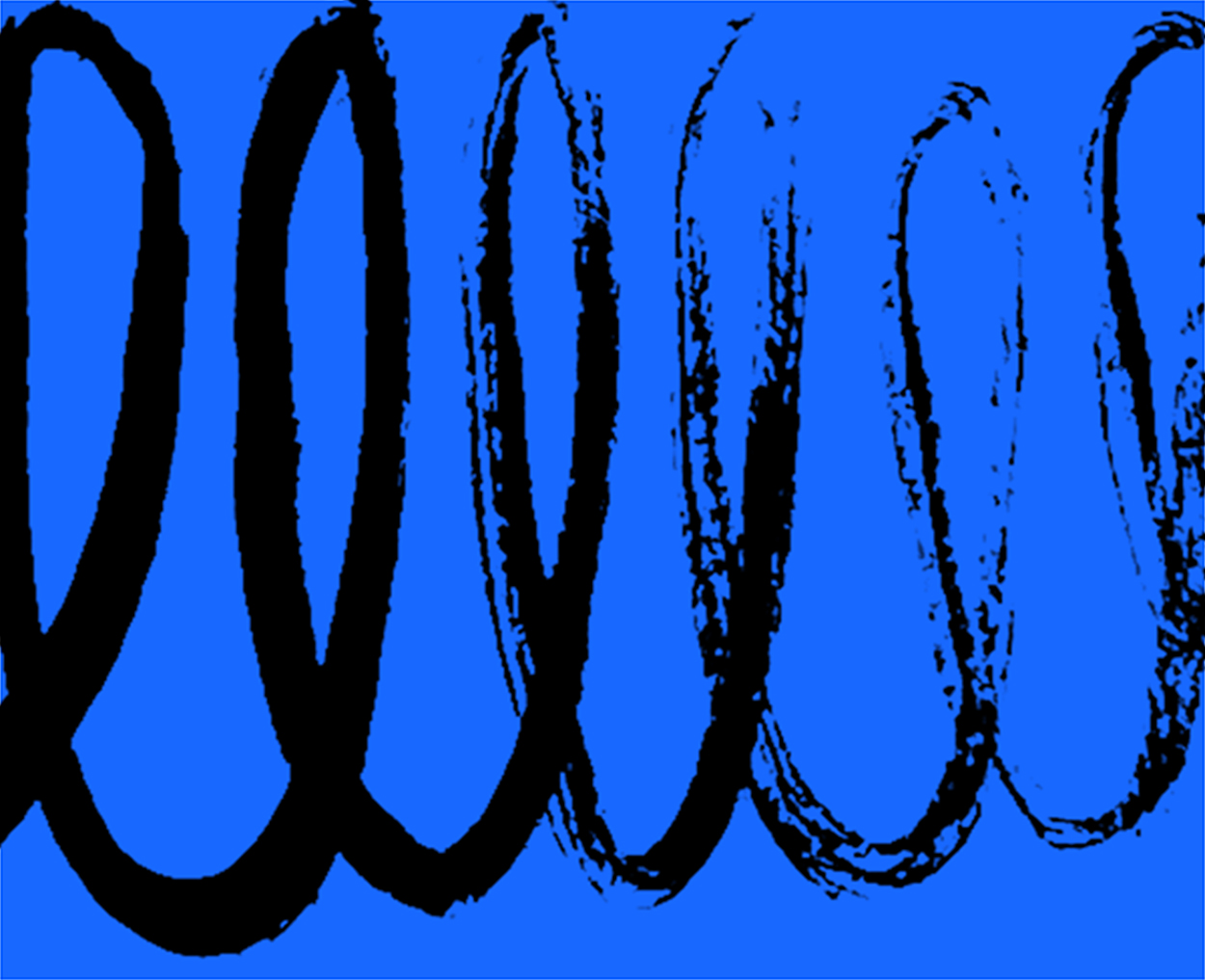
The Strange Commercial
Eventually all advertising will seem strange. Brad Stockshot and Cindy Clipart, modelling chunky knitwear on the beach, will look like absurd freaks. The 2005 Audi A6, as sleek as an arrowhead up on that billboard, will seem as archaic as a crossbow. When the endless repetition of these images stops, when the things they’re referencing are forgotten and arcane, their power to define what’s normal will stop too, replaced by an intriguing quirkiness. As they slip further away from their original purpose, the distinction between these commercial images and art will start to decompose. They’ll hang in museums alongside art. Their power to evoke a lost Pompeii will be just as great, sometimes greater. And they”ve recently been intrigued by two sets of commercials archived on the web, one from late 1960s Germany, the other from early 1980s Japan.
Afri-Cola is a German cola with a caffeine content to rival Jolt and Red Bull’s. As the third cola on the German market, Afri has often played the wild card in its branding strategy. Calculated strangeness is a familiar advertising ploy; if number one is “the real thing”, and number two “tries harder”, it falls to number three to be exotic, weird, arty and misunderstood. With everything to gain and little to lose, Afri-Cola took risks.
Early campaigns emphasized the product’s high caffeine content, but in Charles Wilp‘s 1968 Nonnen (“Nuns”) spot drugs of quite a different kind seem to be involved. Accompanied by a bold soundtrack of disorienting contemporary classical music (scary sliding violins and atonal Henze-like piano chords) the visuals, shot through a melting sheet of icy glass, evoke the decadent filmed parties of Andy Warhol, Jack Smith and Shuji Terayama, with lascivious nuns instead of drag superstars. The voiceover to this “Charles Wilp film” (the prominent caption makes clear its auteurist pretensions) evokes some kinky, prurient documentary about a wicked yet attractive underground scene. Here are “stimulants, sexy cola sounds” and everything you need for an orgiastic “alcohol-free party”. The Pepsi-trumping voice-over slogan, apparently phoned in by Nico, is “sexy mini super flower pop op cola”.
If you think that’s over the top, just wait. In 1972, four years after his “Nonnen” spot, Wilp unveiled Alpha 01. The same spaced-out party chicks are shot through the same frosted glass to the same music, this time kitted out with alpha wave-detecting headphones. Buschbaby (also 1972), accompanied by a melody cunningly evoking the line “I’m black, I’m black, my friends are white” from the musical Hair, works a funky negritude theme, with afro-haired Marsha Hunt doing a curvy dance behind the curvy bottles. Those other colas may look brown, but they’re pretty white inside, you dig?
1973”s hard to know where provocation ends and camp self-parody begins. We seem to witness 1960s counterculture reaching its zenith, nadir and terminus: an identity politics pantomime.

Time and repetition change things in complex ways; they can make something strange seem normal, then strange again. Every schoolkid knows that an ordinary word repeated quickly becomes intensely odd. Erik Satie repeated a short piano piece 840 times and entitled it Vexations. John Cage said: “If something is boring after two minutes, try it for four. If still boring, then eight. Then sixteen. Then thirty-two. Eventually one discovers that it is not boring at all.” (It’s fun to replace the word “boring” in that sentence with the word “commercial”.)
Starting in 1980, French parfumeur and aesthete Serge Lutens art directed a series of promotional films for Japanese cosmetics giant Shiseido. These refined, mannered commercials must have seemed strange at the time; they’re even stranger now. What fascinates me, in films like Baroque and Poesie and Matsuri, is how completely the funky libido of the 1970s has been vanquished. We seem to have travelled back from the Revolution to the Ancien Regime; all is calm, controlled, classical, alabaster white. A glacial frigidity has taken the place of the wild party. Statuesque mannequins in thick Noh foundation swan about in European theatres and galleries or traditional Japanese settings. The mood is dark, refined, poised, poisonous, mannered, snooty, baroque, aristocratic. But the timelessness is of its time. This is a very 1980s take on classicism; images of traditional Japanese arts and crafts float above electronic ‘bamboo music’ scores reminiscent of Kraftwerk and The Yellow Magic Orchestra.
What do Lutens and Wilp’s films have in common? Is it their strangeness or their sheer folie de grandeur which attracts me to them? Do they transcend their eras, or perfectly express them? How has time changed their strangeness? Is it their directors I admire, or their epochs? Do I love their liveliness or their deadness? And how on earth is it possible to like them both, when their techniques, worldviews and references are as different as the 60s and the 80s, revolution and counter-revolution?
I wonder if anyone is making such self-consciously strange commercials now, in what might turn out to be the twilight years of time-based push-media? Is there a Wilp or a Lutens out there directing a swansong for the format as beautiful as these films? I have no idea. You see, I can’t stand repetition and I feel trapped by too much exposure to the dogma of the times, the doxa. So I try to make sure I don’t see any commercials. Not until they’re safely strange, anyway; vintage, retro, framed in some museum, pressed like brittle flowers in the pages of someone’s PhD thesis. Ask me again in 25 years.
(The Afri-Cola archives are hosted by Afri-Cola. The Shiseido archive is hosted by Grey Art Gallery, New York University. If you’re having trouble playing the media files, paste the URLs directly into RealPlayer’s “Open Location” window.)
Observed
View all
Observed
By Momus
Related Posts

Graphic Design
Sarah Gephart|Essays
A new alphabet for a shared lived experience

Arts + Culture
Nila Rezaei|Essays
“Dear mother, I made us a seat”: a Mother’s Day tribute to the women of Iran

The Observatory
Ellen McGirt|Books
Parable of the Redesigner

Arts + Culture
Jessica Helfand|Essays
Véronique Vienne : A Remembrance
Recent Posts
Mine the $3.1T gap: Workplace gender equity is a growth imperative in an era of uncertainty A new alphabet for a shared lived experience Love Letter to a Garden and 20 years of Design Matters with Debbie Millman ‘The conscience of this country’: How filmmakers are documenting resistance in the age of censorshipRelated Posts

Graphic Design
Sarah Gephart|Essays
A new alphabet for a shared lived experience

Arts + Culture
Nila Rezaei|Essays
“Dear mother, I made us a seat”: a Mother’s Day tribute to the women of Iran

The Observatory
Ellen McGirt|Books
Parable of the Redesigner

Arts + Culture
Jessica Helfand|Essays

 Nick Currie, more popularly known under the artist name Momus (after the Greek god of mockery), is a songwriter, blogger and former journalist for Wired.
Nick Currie, more popularly known under the artist name Momus (after the Greek god of mockery), is a songwriter, blogger and former journalist for Wired.